A budget is necessary to track monthly expenses and predict unanticipated costs to avoid going into debt. Knowing where your money is going will give you more financial control.
AWS Budgets helps users manage cloud expenses by tracking spending, paying invoices, and evaluating costs through AWS billing and cost management.
This solution can help keep cloud prices under control because it helps assess and control spending.
It allows the creation of custom budgets to track the user’s costs monthly.
Set up alerts to notify when the user-defined spend thresholds are met, and utilize AWS Budgets to monitor the overall budget portfolio.
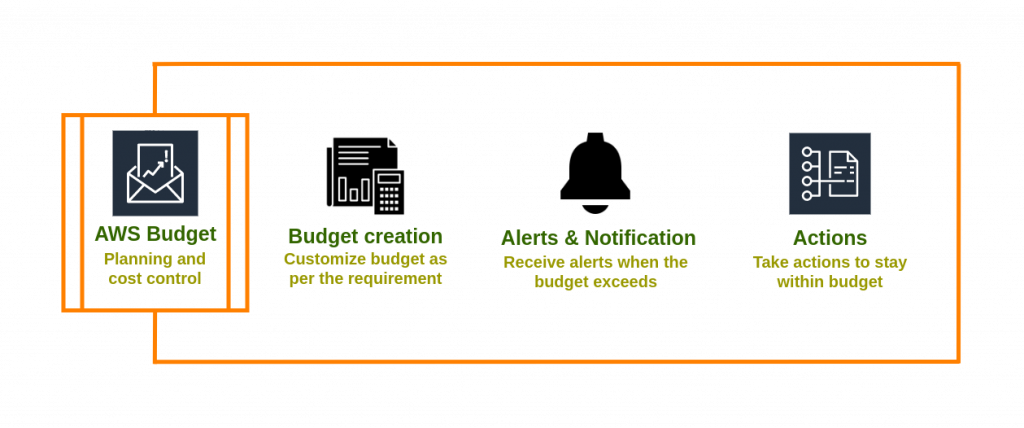
Types of AWS Budgets
Cost Budget
Determine how much money you want to spend on a service.
Usage Budget
Decide how much you want to spend on one or more services.
Reservation Budget
- RI Utilization Budget: Set a utilization threshold and get notifications when your RI usage falls below it. This allows us to determine if any of the RIs are underutilized or unused.
- RI coverage Budget: Set a coverage threshold and get notifications when the amount of your instance hours covered by RIs falls below it. This shows reservations cover how much of the instance’s consumption.
Savings plan Budget
- Savings plan utilization Budget: Define a usage threshold and receive notifications when your Savings Plans’ consumption falls below it. This allows you to determine if any of your Savings Plans are underutilized or unused.
- Savings plan covering Budget: Define a coverage threshold and receive notifications when your Savings Plan eligible usage falls below that threshold. This displays the percentage of your instance usage that is covered by Savings Plans.
Benefits
Custom Budget: To effortlessly control the AWS spending, and create custom cost and usage budgets. From the AWS Budgets overview, customers can keep track of the budget’s overview.
Alerts & notifications with reports: Create and deliver reports to track AWS Budgets’ performance daily, weekly, or monthly, with email notifications for budget overruns.
Refine Budgets: Add filters relating to service, member accounts, region, tags, and more to track your cost or consumption across several dimensions.
Define actions: Define actions to decrease or avoid unplanned costs before they happen. Reduce the requirement to monitor and respond to alarms to cut costs.
AWS Budgets creation
1. Open the AWS Cost Management console and choose AWS Budgets after logging into the AWS Management console.

2. Choose ‘Create Budget’ on the page.
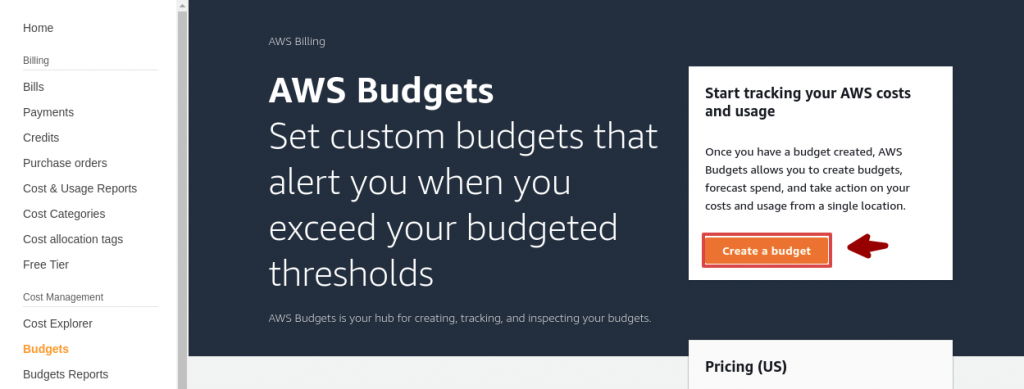
3. Click Next after selecting Cost Budget from the budget type.
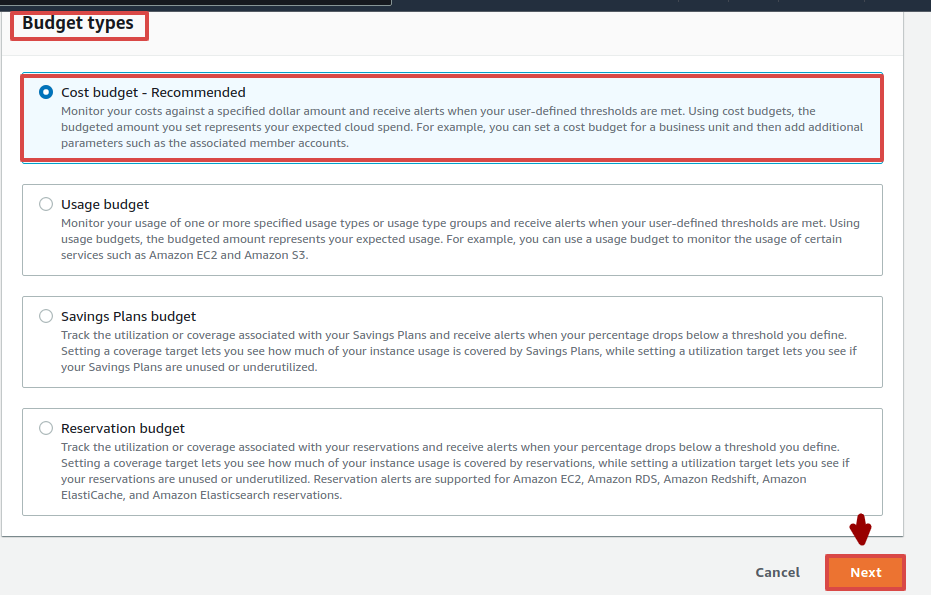
4. After completing the preceding steps, set your budget by providing the relevant information, such as budget details, budget amount, and budget scope, and then click next to continue.
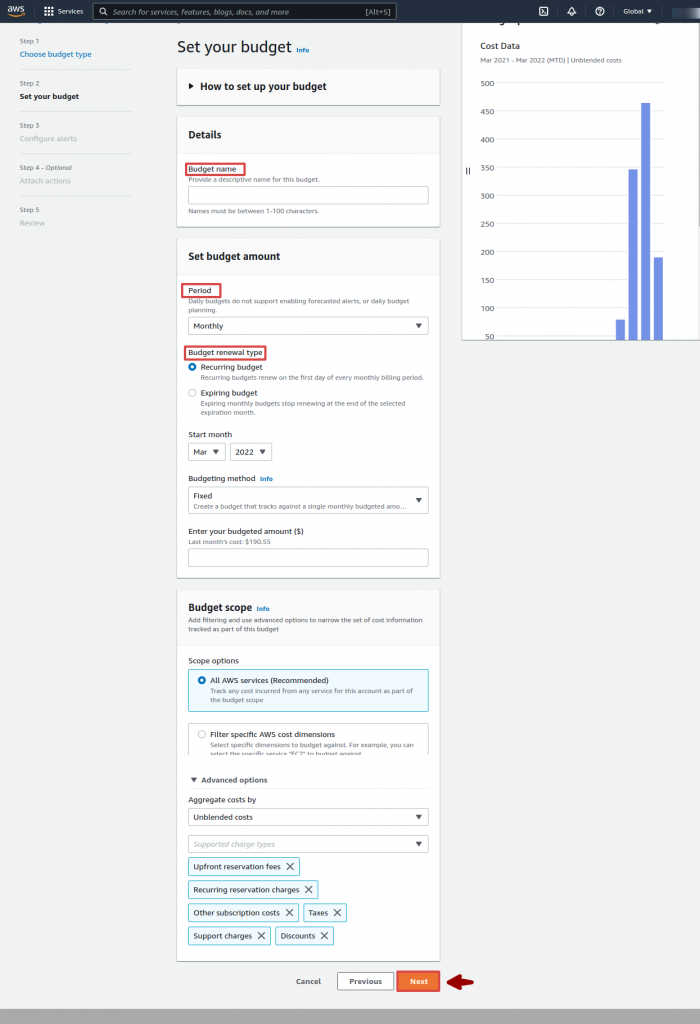
5. Now, click on “Add an alert threshold”.
(i) Set the Threshold in the Set alert threshold section by entering the amount that must be achieved to notify. This quantity can be expressed as an absolute value or as a percentage.
Let’s imagine you have a budget of $15,000 to work with. Enter $7,500 as an absolute figure and 50 as a percentage value to be notified when the budget decreases to $7,500.
(ii) Aside from that, you can now choose your notification preferences, which is optional. You have to choose between Amazon SNS Alerts and Amazon Chatbot Alerts.
(iii) Choose “Next”.
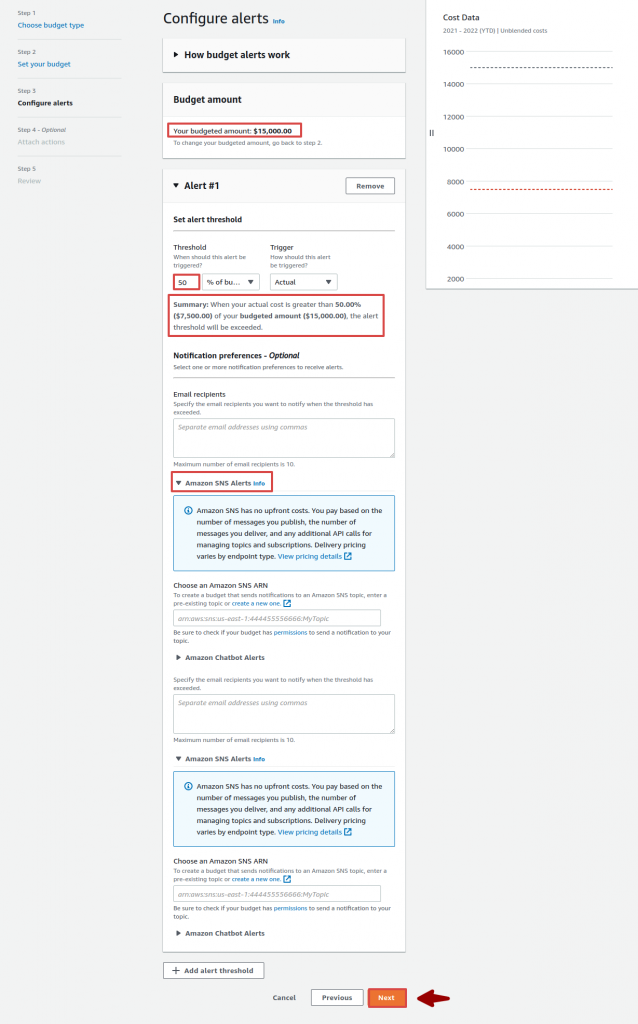
6. Attach actions – Optional
It allows you to set an optional action that AWS Budgets takes on your behalf when the alert threshold exceeds. After you’ve attached an action, click “Next.”
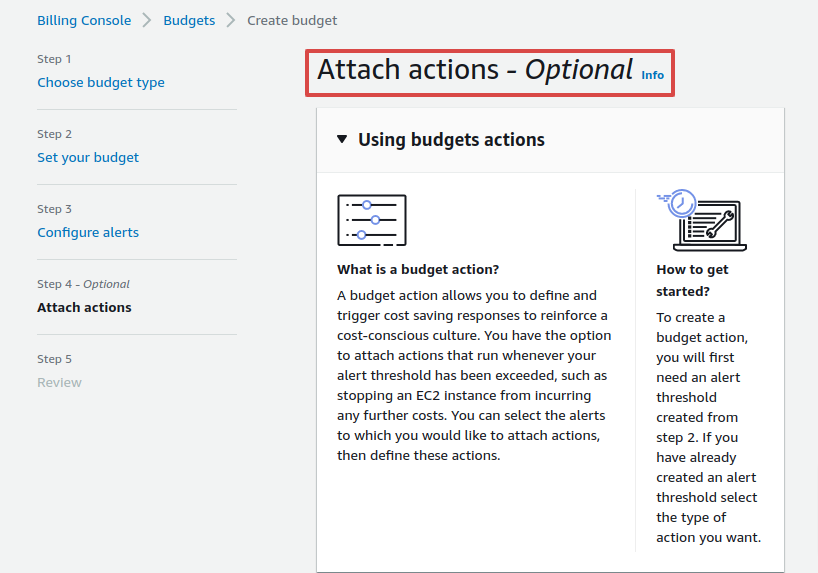
Finally, review your budget settings and click Create Budget.
Methods of AWS Budgets
One of the following methods can be used to set the budgeted amount of the cost or usage budget.
Fixed Budget: A fixed budget allows one to keep track of the same amount each budget cycle. For example, use a cost budget with the fixed method to track your expenses against $100 each budget period.
Planned Budget: The planned budgeting method is only applicable to monthly or quarterly budgets. Using a predetermined budget, one can choose a different amount to monitor each budget period.
Using a monthly cost budget and the planned technique, one can track expenditures against $100 in the first month, $110 in the second month, and other amounts in future months.
With a planned budget, one can specify the budget amount for up to 12 months or four quarters. After 12 months or four quarters, the budget amount is fixed at the previous budget amount.
Auto-adjusting Budget: An auto-adjusting budget modifies the budget’s amount based on expenditure or consumption over a set period.
The historical or predicted period we choose serves as the budget’s auto-adjustment baseline.
For example, create an auto-adjusting cost budget with a six-month baseline period.
The auto-adjusted budget amount for the new period will be $100 if your average spending per budget period in the preceding six months is $100.
Conclusion
AWS Budget includes all the important elements to assist you with cost control, whether you want to forecast cloud expenses or receive notifications when your spending exceeds your budget.
Thanks For Reading!
At last, we hope it works for you! And during this blog, you have found something valuable.
Keep in touch!!
In case of any help or query, please contact us or raise a ticket.


Be the first to comment.